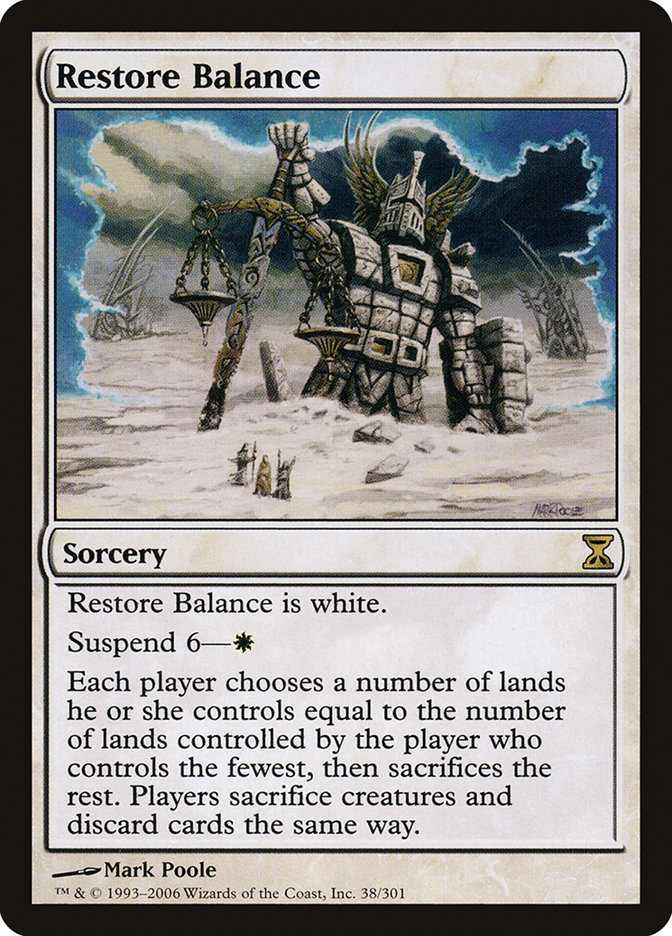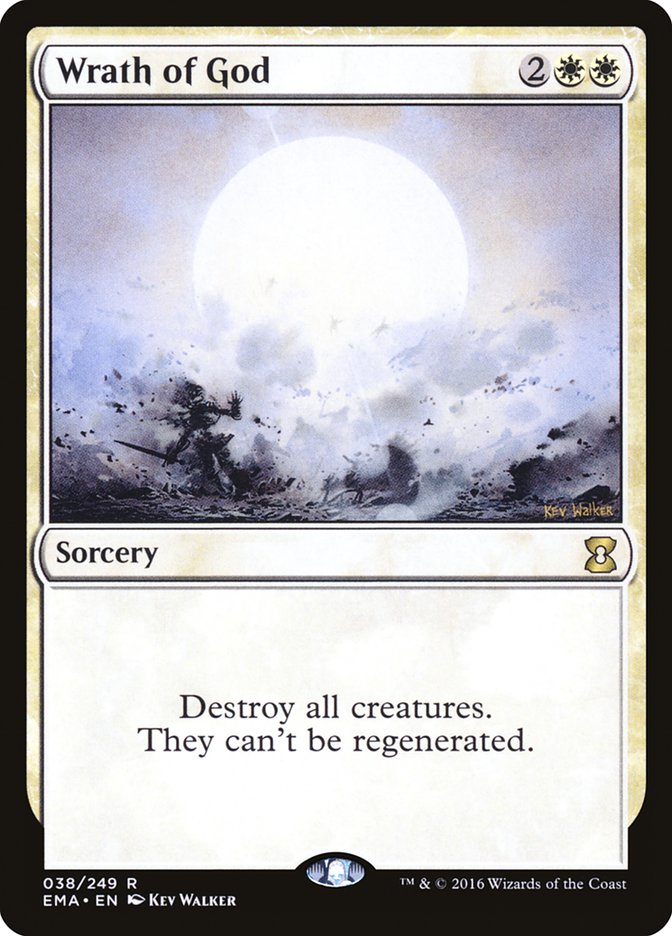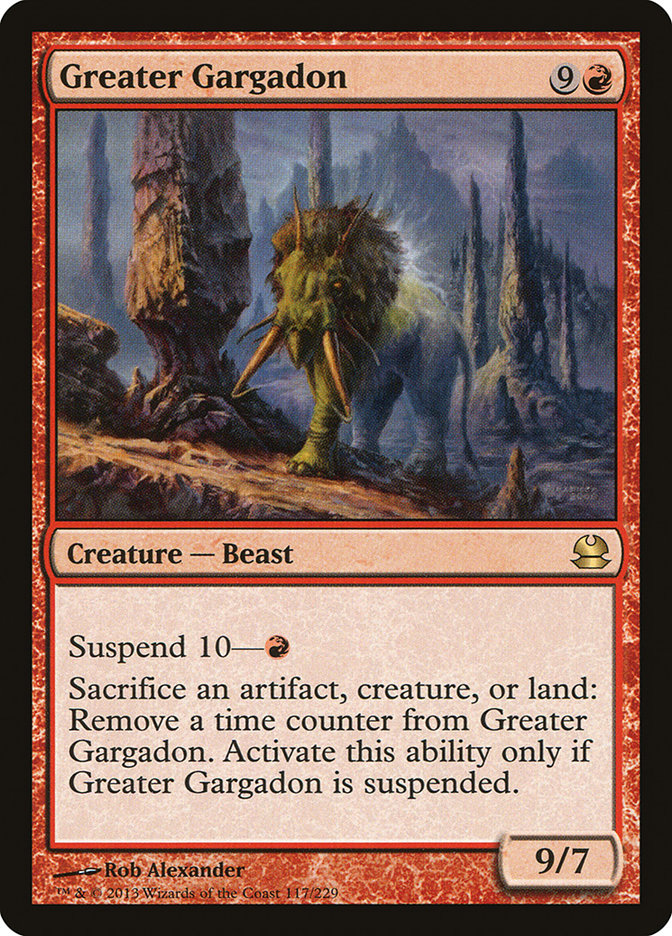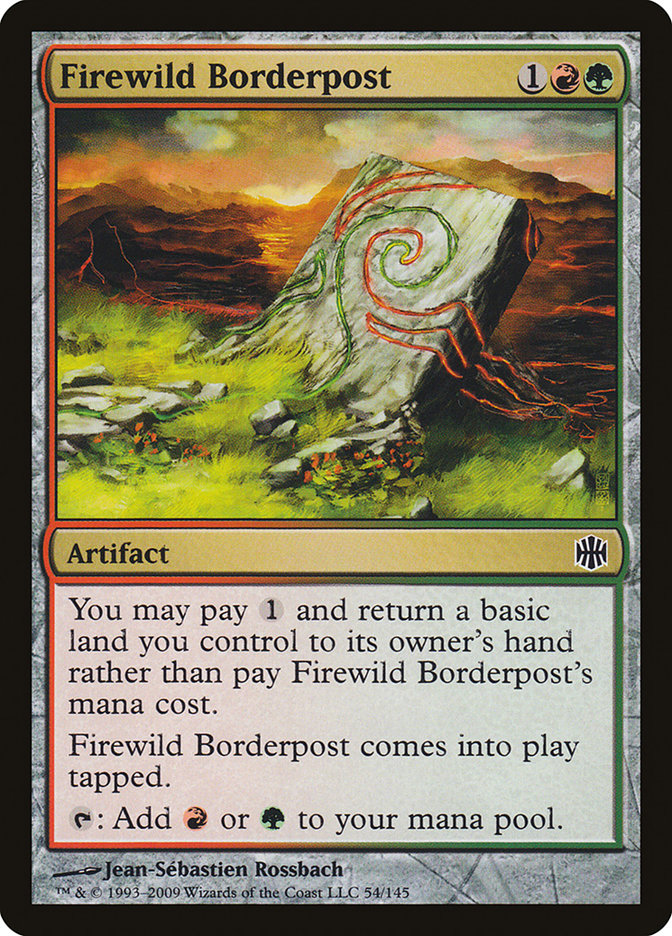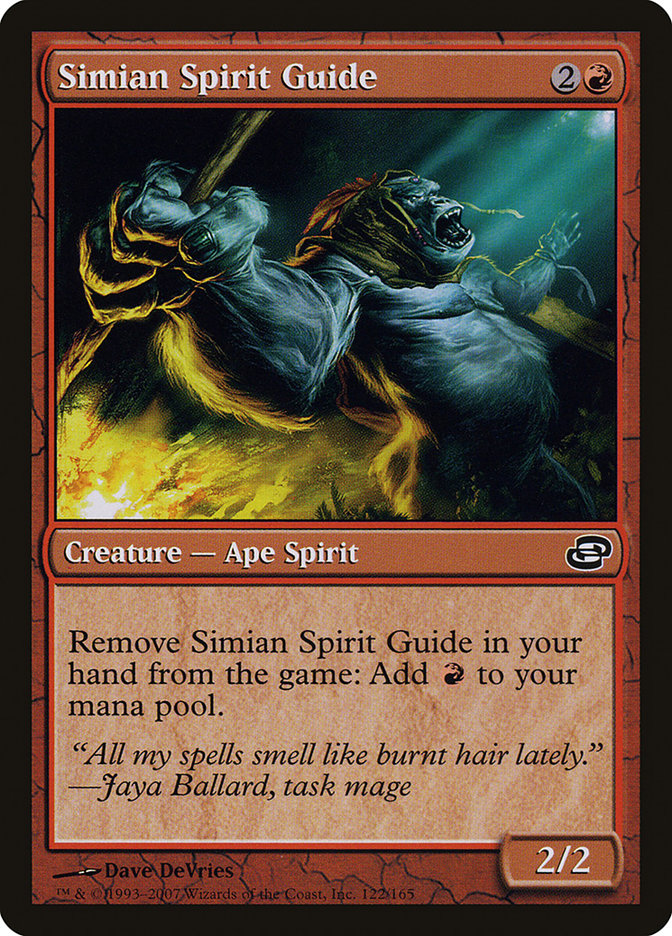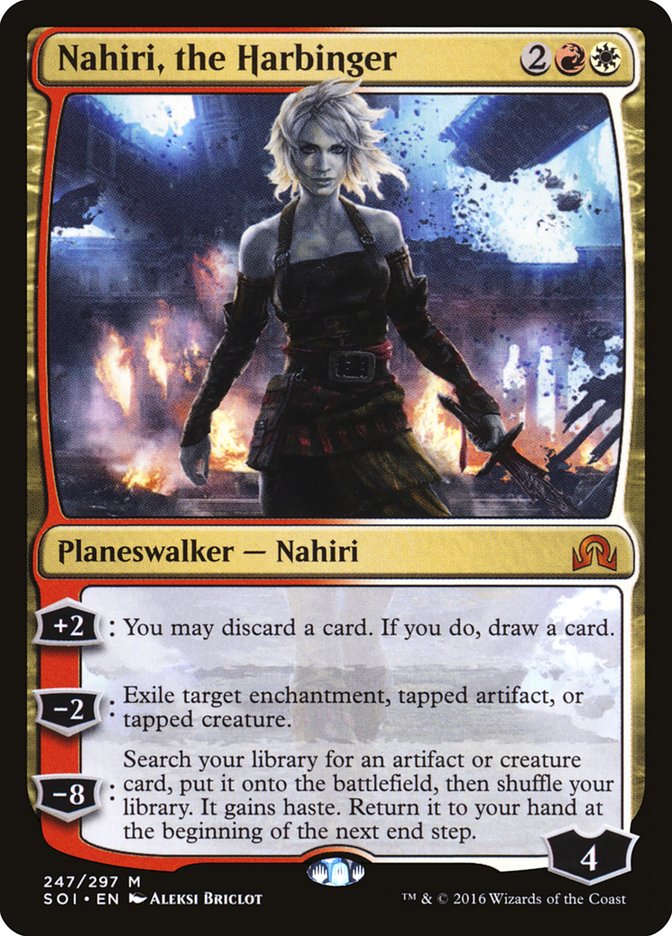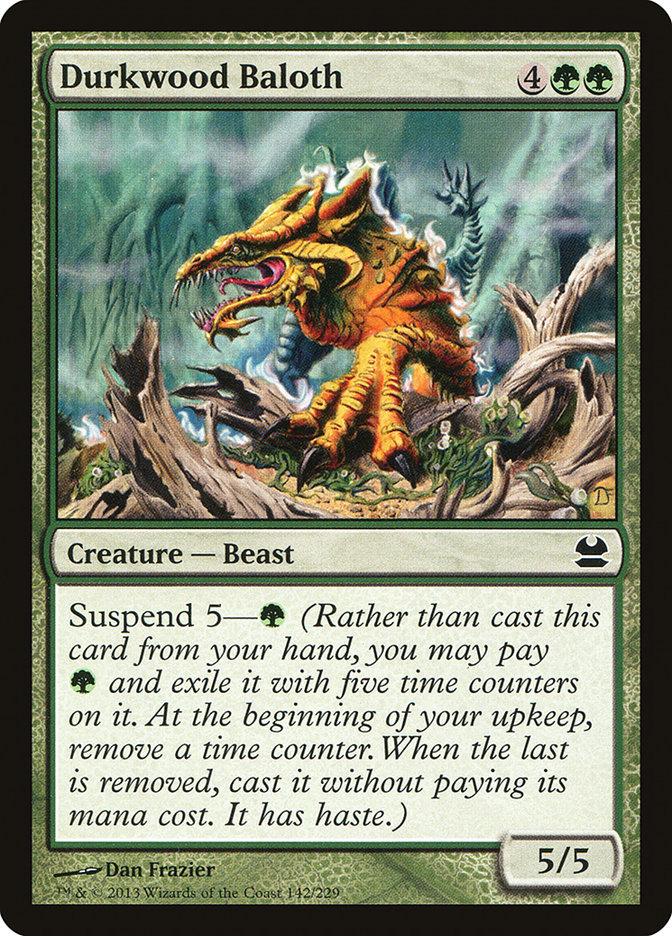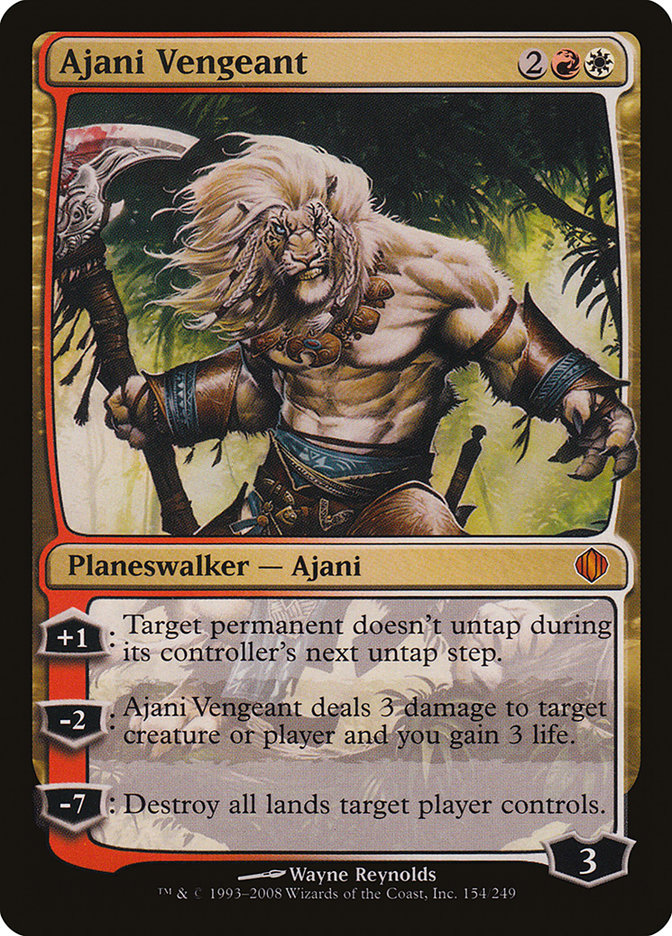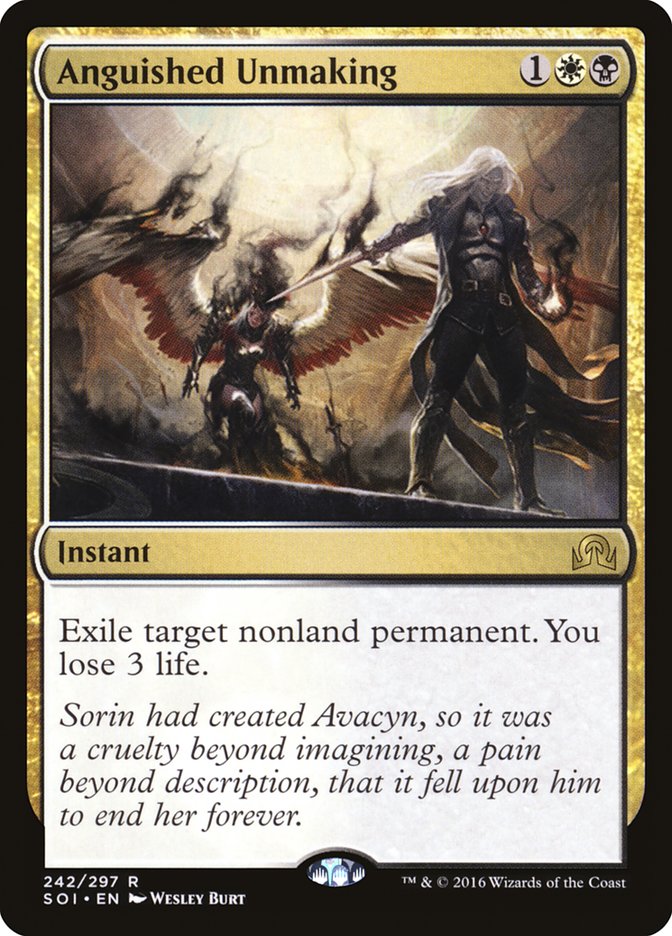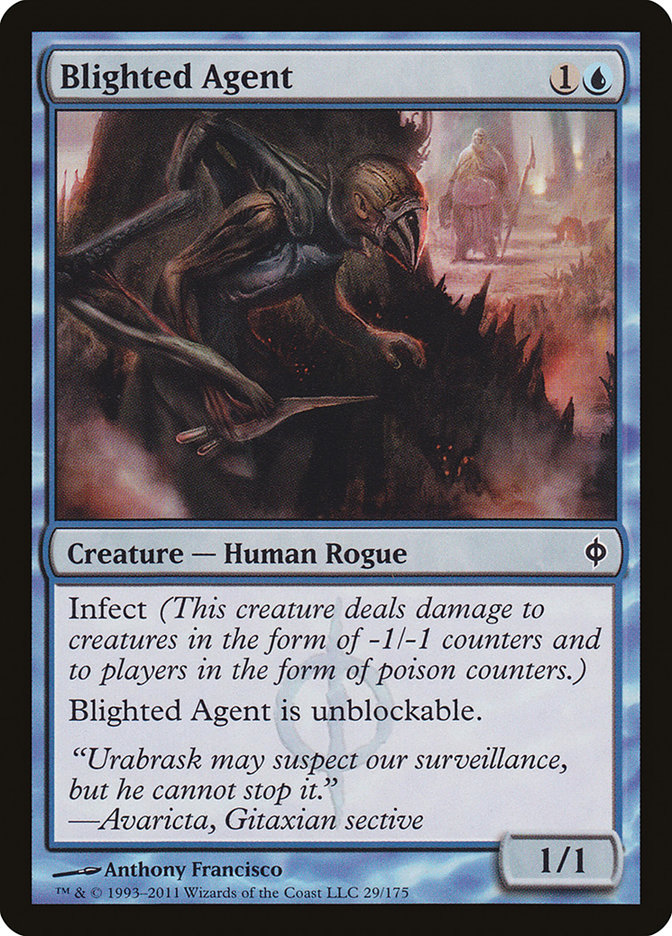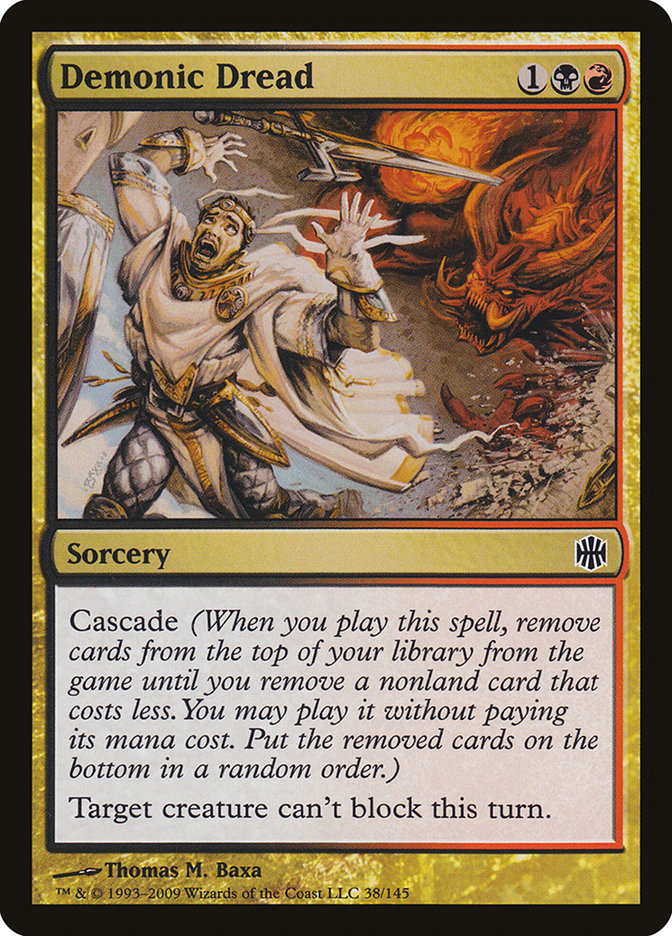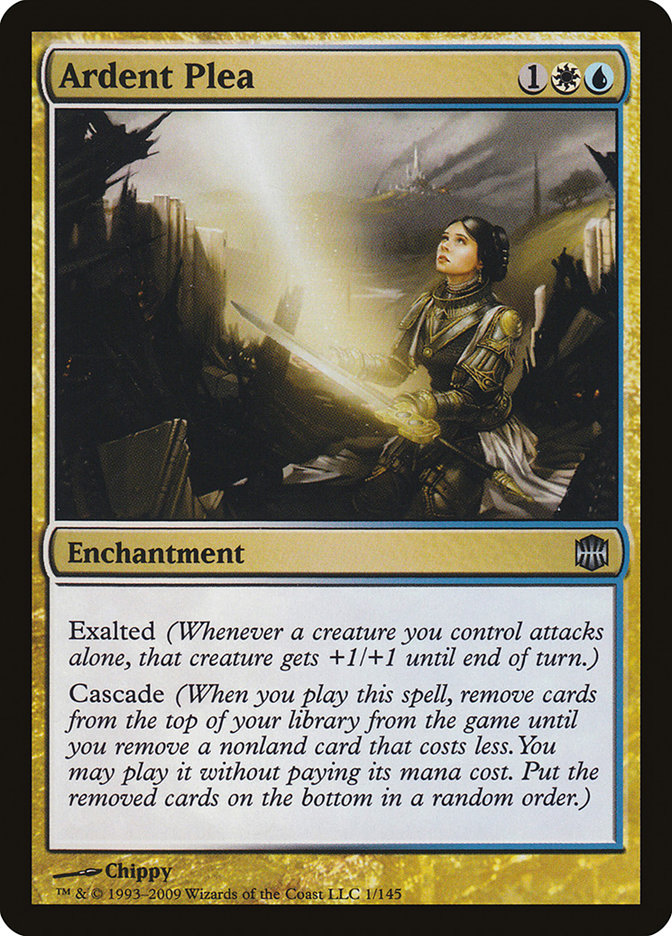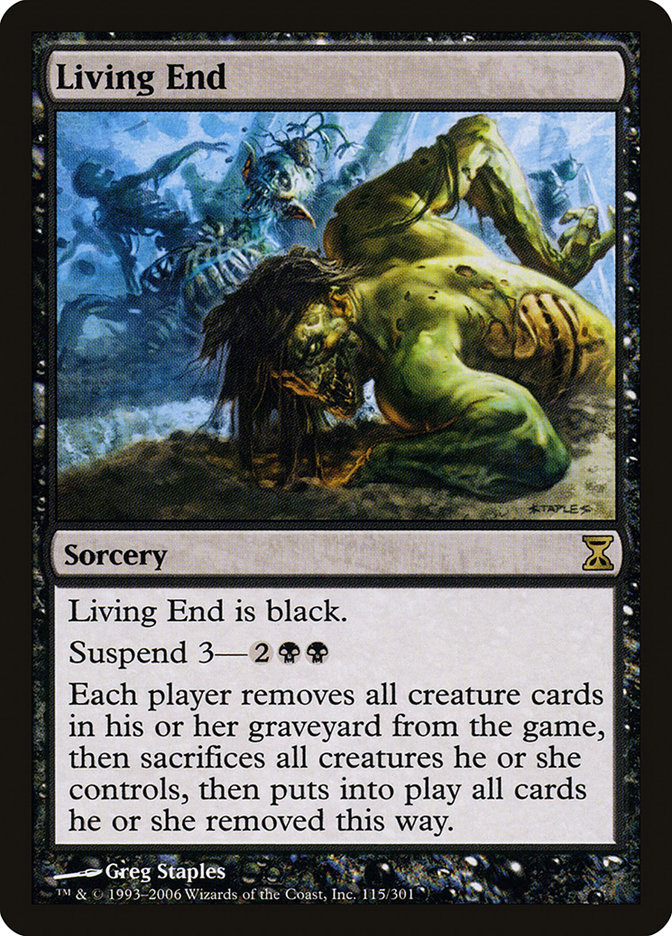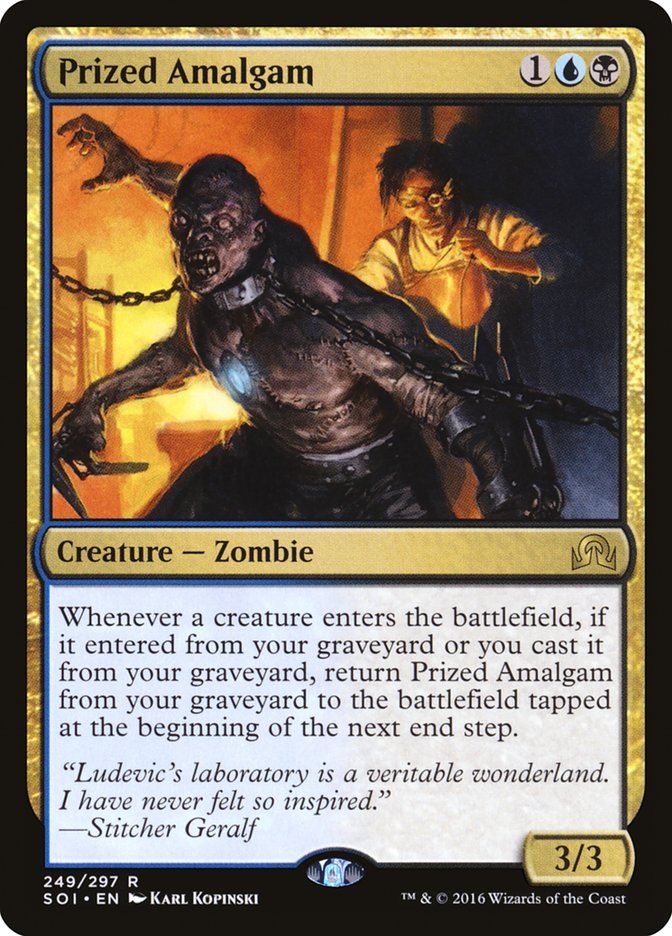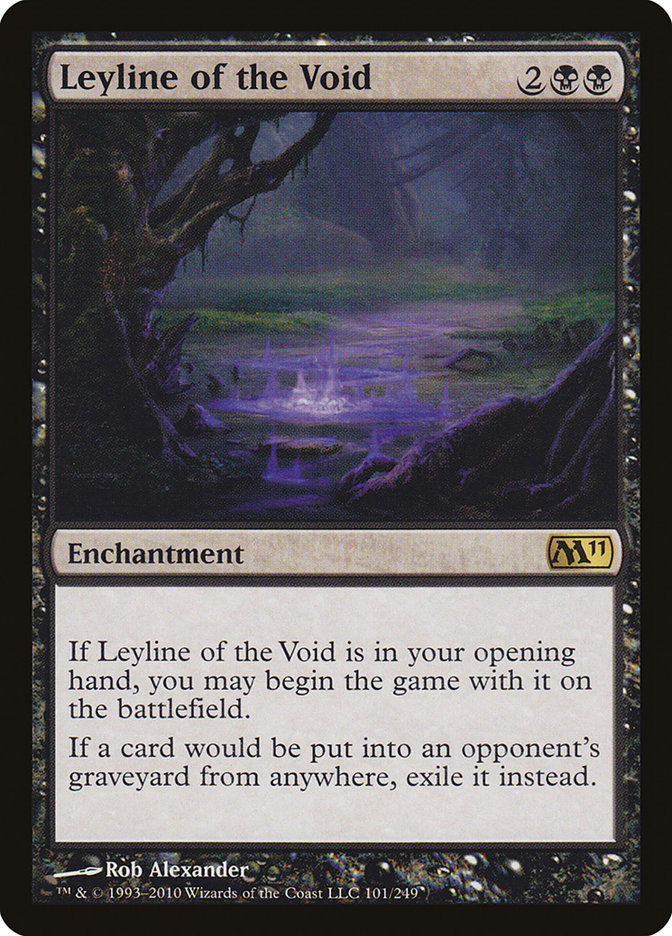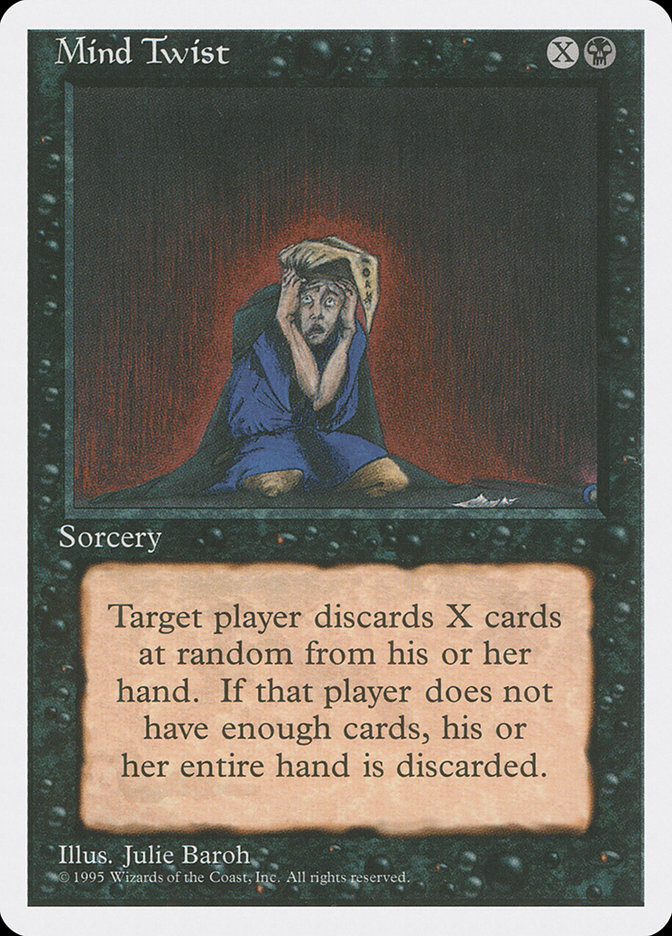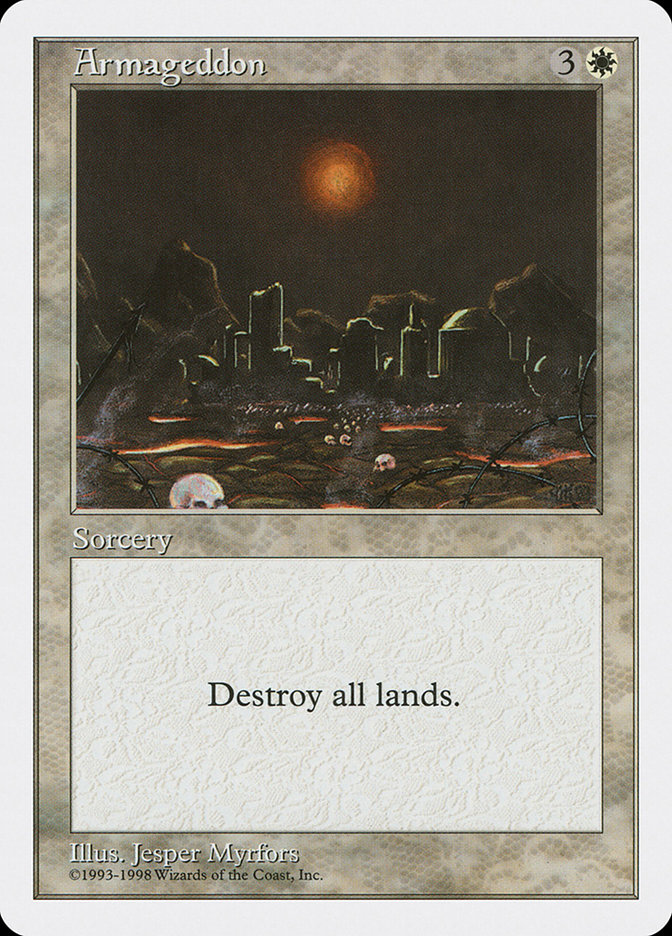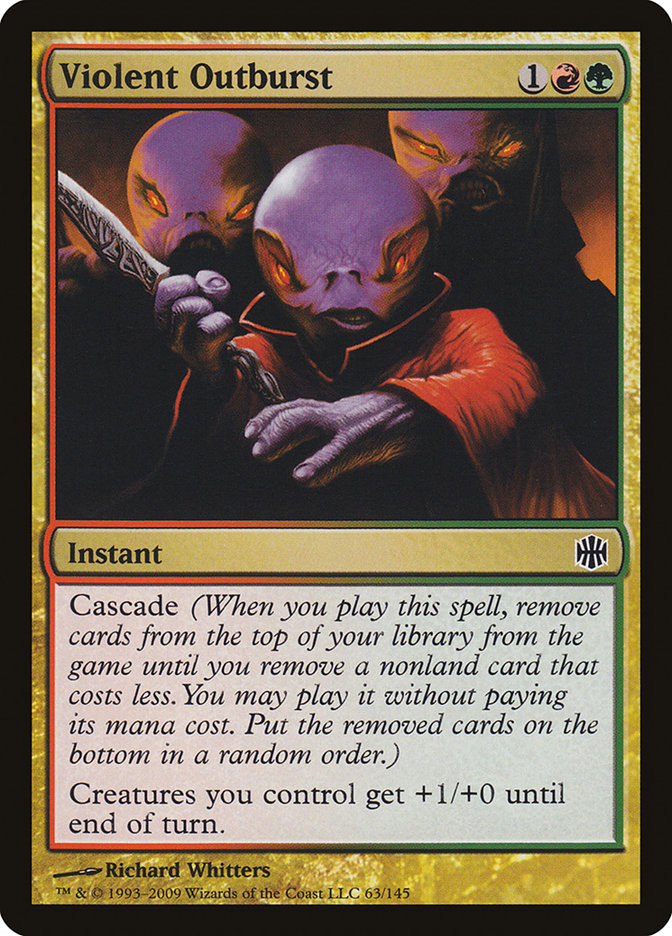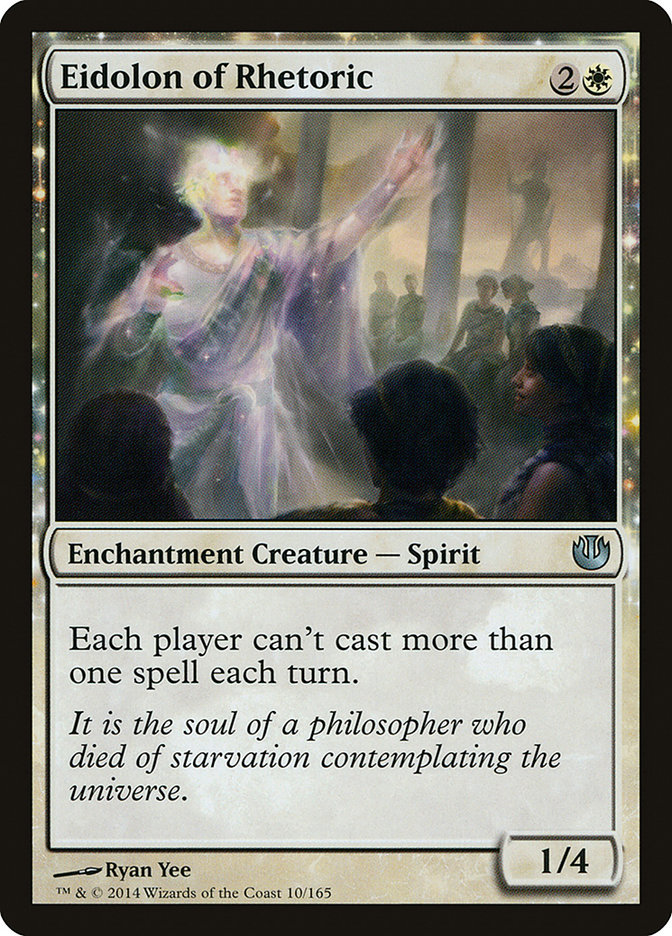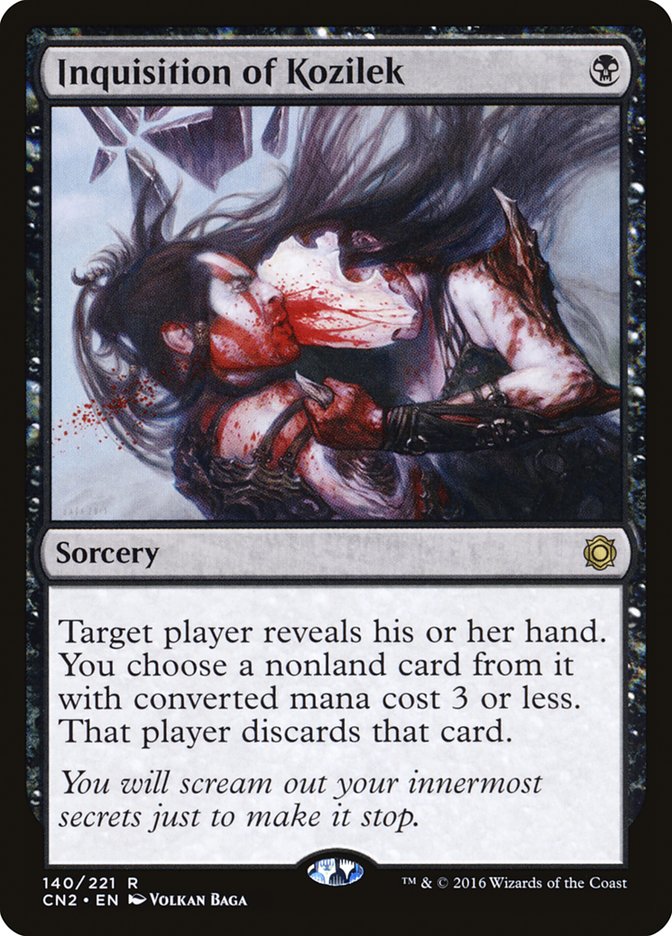This past weekend, I sleeved up the fun deck I kept winning with.
Reason One – I kept winning with it.
Reason Two – I didn’t have time to learn Lantern Control.
Reason Three – I wanted to pack light and not worry about a last minute audible, so I simply locked in and build it.
Behold Restore Balance, the most fun you can have in Modern if your goal is making people technically continue to play games despite being unable to cast spells:
Creatures (9)
Planeswalkers (6)
Lands (16)
Spells (29)
- 3 Blood Moon
- 3 Restore Balance
- 4 Violent Outburst
- 4 Veinfire Borderpost
- 4 Firewild Borderpost
- 4 Demonic Dread
- 1 Wildfield Borderpost
- 2 Anger of the Gods
- 2 Mardu Charm
- 2 Anguished Unmaking
Sideboard

What is Restore Balance?
The general idea of Restore Balance is similar to that of Living End. You want to cascade into a zero cost spell that in turn generates a broken symmetrical effect you can exploit.
One assumption of Restore Balance is that you aren’t playing many creatures. Even if you were, it’s not reliable to assume your opponent is and you would often lose your creatures when Restore Balance resolved. As a result, Restore Balance almost always mirrors Living End in its sweeping capabilities.
The key build around of Restore Balance is exploiting the land balancing. You could leave them with no hand, no creatures, but many Modern decks can topdeck out of that. Instead, leaving them with zero or one land and no creatures makes most of their hands blank. There are two ways that the current list does this: sacrificing lands to Greater Gargadon, or replacing lands on the battlefield with Borderposts.
The other way to build towards Restore Balance is raw card count. By playing card types that aren’t counted by Restore Balance, you can force your opponent into a low resource situation where you are far ahead. One way to do this is just getting the cards out of there. Simian Spirit Guide making mana or just suspending spells are the primary ways to do this. You can also play enchantments like Blood Moon, artifacts like Borderposts, or planeswalkers. While the cards you are casting might not look quite up to snuff, when all is said and done, you have received most of a card of value. Meanwhile, your opponent is forced to be way down on resources.
Why Restore Balance Now?
Restore Balance is a deck I have tried and liked as a not-great fun deck in the past, mostly via the heavy suspend lists a couple years back that included such highlights as Errant Ephemeron and Durkwood Baloth.
I never had tried the lists that were super heavy on Borderposts, but I knew from experience crushing them with a variety of decks that they were too easy to disrupt. Too many Stony Silences, Abrupt Decays, and Qasali Pridemages flew around the format for their mana to work.
At Grand Prix Lyon, a copy of the deck finished in the Top 64 after an even more solid start that had a lot of new technology. It turns out Julian Felix Flury had figured it all out.
The biggest shift was changing from a dedicated Restore Balance deck to more of a general “Restore Balance and other nonsense” strategy. You are less linear, but at the same time this doesn’t cost you much power. The nut draw of Greater Gargadon and cascade spells is still very much in place, and you can also just nut draw into a turn-2 Blood Moon, cripple a creature deck with Anger of the Gods, or do any number of other things.
Playing interaction and playing for a more versatile game plan also lets you better leverage your Balances. You don’t always want to jam your Violent Outburst as soon as possible, as it won’t necessarily take out enough resources. You want to find the spot to absolutely annihilate your opponent, and having the interaction lets you maneuver right to that. You can play a game where your questions change from just “do I have to cast Restore Balance here to live?” and include “does this absolutely crush my opponent or can I get more?” You can make an alternate play to try and nab all their lands or all their cards in a turn and not just be forced to pass, do nothing, and hope they overextend more while doing so.
The interaction also lets you go toe-to-toe with the absurdly fast creature combo decks. You aren’t all-in on firing off an early Restore Balance to not die. There are a lot of times you can use Simian Spirit Guide in a “fair” way to play a three-mana interactive spell on turn 2 to break up an early kill. Again, you can also chip away at their first threats, then clean up the rest with a later Balance and not just die to their reload. Your deck just plays more like a real deck and less like the one-shot gimmick the early lists trended towards.
Another big shift was the mana. Moving from Ardent Plea to Demonic Dread homogenized your color requirements to “go off.” It’s hard to pinpoint the exact scenarios where things get awkward, but you can see the general problem of drawing the wrong Borderposts for your spells. In this list a single Veinfire Borderpost or Firewild Borderpost is one specific land away from either cascade spell, whereas a Fieldmist Borderpost doesn’t contribute to a Violent Outburst. The mix and match issue gets even worse once you start trying to figure out what non-cascade spells you want to play and then throw the whole “needing to fetch basic lands to enable Borderposts” issue on top of it all. You can see how making everything a step simpler is a great idea.
You are also playing less Borderposts than most previous builds, whereas the previous lists really wanted their middle two-color Borderposts (i.e. Wildfield Borderpost in a R/G/W/U deck) on top of the cascade-matching ones. It’s the difference between nine copies versus eleven or twelve, but it ends up being huge. A card like Stony Silence or Ancient Grudge is now sometimes annoying but rarely devastating. You can afford to play Sacred Foundry to fetch and don’t have to maximize basics to avoid mulligans. You need less mulligans because you have less all-Borderpost hands.
This also isn’t to say mulligans are bad. Often you are in situations where you mulligan to four or five cards and are almost happy to have done so. When you eventually Restore Balance, each card you sent back is one more card your opponent loses. You aren’t actively trying to mulligan hands that do something powerful, but I’m extremely reluctant to keep anything that isn’t some classification of “great draw” on six or seven cards. This unique property of Restore Balance might have been one of the biggest appeals to it, as it really violates a core rule of the game by doing so.
As mentioned, Restore Balance has a lot of similar sweeper properties to Living End. It has previously been classified as a worse cascade deck as it doesn’t capitalize quite as well on the sweep; there isn’t a built-in ten or more power brought back.
But you have a lot of the same strengths.
Most creature strategies are very simple matchups since your effect is so backbreaking. You even avoid some of the Living End-specific pitfalls like Viscera Seer or Arcbound Ravager while maintaining some of the specific strengths like the fact that you force a sacrifice.
The issue with Living End right now is that you simply can’t play it into the Dredge-pushed metagame. Are you really showing up with a graveyard deck to the graveyard hate sideboard event? At the same time Restore Balance gains a ton here with Dredge pushing out fairer counterspell strategies that can be annoying and with people cutting some of the arbitrary spell and artifact hate cards from their sideboard for Grafdigger’s Cages and Relic of Progenitus.
What Does Restore Balance Beat?
Mostly creature strategies, but also possibly anything.
One of the draws to Restore Balance is Mind Twist and Armageddon are just generally good Magic cards that are hard to defend against. It turns out that even in 2016 we still need cards to win games of Magic and lands to cast them.
Your strategy is generally fine against anything. You have a bit of the true Modern combo style where you can actually threaten a game-ending play on turn 2 or 3, but as I’ve repeatedly said, you aren’t locked into that game plan. You can shove or you can play a long game; it’s all about evaluating your resources.
What Beats Restore Balance?
There are weird cards that don’t get hit by Restore Balance. You can often just Armageddon your opponent to cut them off the ability to play, but Mox Opal is a special case. Affinity isn’t super worrying as you still kill all their creatures, but Lantern Control… yeah, I have no clue how you beat that deck. They are capable of winning games off no cards and no lands with just a bunch of artifacts, and unless you overload on artifact removal, you won’t have enough to pick apart all their lock pieces before your draw step is dead. I debated sideboarding into Ancient Grudge as my cascade target over Restore Balance to beat it, but I seriously doubted it would be enough of the metagame to warrant it.
The times I have lost to weird combo decks that I’ve been able to interact with have largely been on the back of countermagic. You can get into good spots with planeswalkers and instant Restore Balance off of Violent Outburst, but beating an oversaturation of the right countermagic backed by a clock is hard. Not only are you a little threat-light but each of your threats requires you to tap out.
“Hey Ari, you just said your deck is good against people who need cards in hand to win and bad when they ignore that. Dredge is a deck that is actively trying to discard cards. You also said you can’t play Living End into a Dredge metagame due to the hate. How can you justify playing a deck that loses to Dredge into a Dredge-metagame?”
Everyone can play Dredge hate. Not everyone can play Dredge, and far fewer people than you assume will play Dredge actually do. Even beyond that, everyone else playing hate will keep Dredge down a bit.
Sometimes you have to take a risk and go a level up. If this was a week ago and Cathartic Reunion Dredge was not a high priority target but was still good, I would have just played that instead of Restore Balance. But in people’s minds the Modern metagame moves fast, so in reality almost no one changes their deck choice and everyone just changes their sideboard.
This brings me to another reason I played Restore Balance, which kind is kind of the whole philosophy behind why some people hate Modern.
Reason Four – It’s Modern. Anything can happen, and worrying about the specifics is overrated.
When anything can happen, it is hard to actually plan for an event on a card-for-card level. This really bothers people who are used to being able to go to a perfect 75 to beat the expected five decks in a Standard tournament with very well-defined game plans.
Sure, Infect might be on the upswing this week, but that means you play against it 50% more to a total of one or two times. Maybe Dredge is the hot deck that actually wins, which means if you go deep into the event, you have to beat it…again once, maybe twice. Sure, sometimes you play against Burn four times in a weekend. That happens too, because that’s Magic.
At the end of the day, you are playing against a random sample of a very diverse population. Anything can and will happen.
You have to select a deck that does something relevant early enough to matter in the dark, but beyond that, things are a little more up in the air. You want to consider your matchup against “creature combo” when making a deck choice, not necessarily specifically Infect or Death’s Shadow. You need to know how to play against those specific decks, but “My deck can’t beat Death’s Shadow” isn’t good enough to shift your opinion.
If you want to worry about metagame things, worry about big picture reactions. “People expect a lot of Infect, so I shouldn’t play a deck full of x/1s if I care about them dying to Darkblast.” “People expect a lot of Dredge, so I should avoid other graveyard decks or things that lose to Grafdigger’s Cage.”
At most you should worry about one or two specific archetypes, and even then it’s only a tertiary concern. “This deck will likely do well, I probably have to be able to beat it to win the event.” This is why I played Dredge hate in my sideboard to a little bit of excess. It’s possible I could have used the sideboard space better on a mix of Dismember, additional Anger of the Gods, but it was a case of seven or zero and I chose the high end. At least Leyline of the Void has additional benefits against other random graveyard decks that no one is playing because of Dredge, right?
Restore Balance Specifics
Violent Outburst being an instant means you can cast it at any time. That means your upkeep, their draw step, in response to activating your fetchland…
You can sacrifice permanents to Greater Gargadon in excess of the number of time counters on it while it is awaiting the suspend cast trigger.
You do have creature cards in your deck that you can cast to target with Demonic Dread. You can also shave down on Demonic Dread if your opponent doesn’t have creatures to target.
The Future of Restore Balance
Off the bat Restore Balance is definitely a deck you have to pull back on if the hate or the wrong opposing decks show up. Know when to fold.

The thing that interests me the most about Restore Balance past this weekend is how oddly flexible the deck is for a cascade shell where you can only play higher cost cards. It turns out there are a lot of weird hate options out there once you spread across four colors.
If anything, you are actually presented with more options due to having to cut the obvious “best” ones out of the way. How else would you get to Mardu Charm?
Really, I couldn’t think of a better analogy for the Modern format. You have a hard cap on what you can do, but with a little bit of rule bending you are suddenly presented with a diverse set of options. How can you tell which is the best? Meh, you probably can’t, but you can make some great vague guesses.


